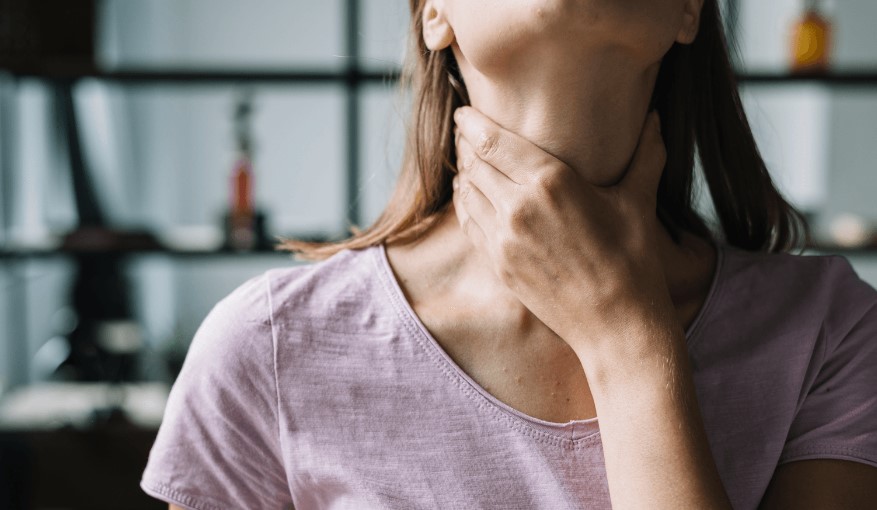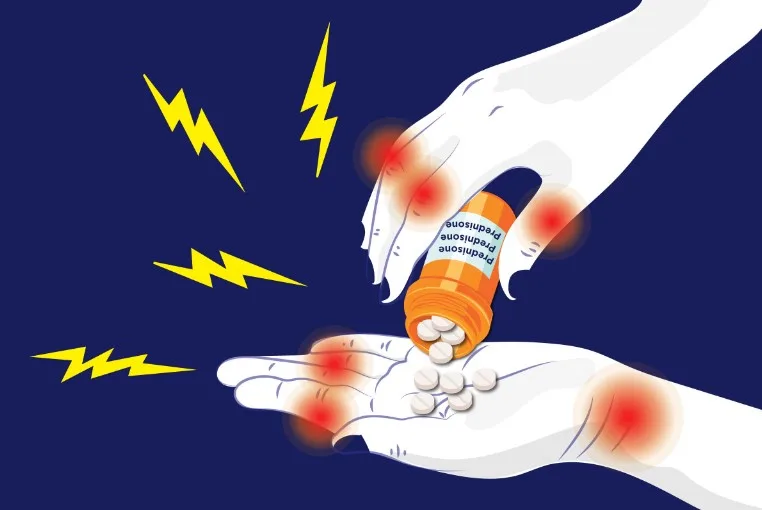
Cobblestone Throat: What Results in Throat Bumps?
What is the Cobblestone Throat?
An unpleasant ailment called cobblestone throat results in pebble-like pimples on the back of the throat. The adenoids or tonsils, which are tiny lumps of tissue at the back of the throat, are the cause of these bumps because they have expanded lymphatic tissue.
If you have a cobblestone throat, the back of your throat may have noticeable red lumps. You can also feel a scratchy or sore throat in addition to this. Usually harmless, it is treatable, and it might even go away on its own.
But those who have this condition might erroneously worry that they are gravely ill. Some people may even suspect they have cancer. A significant lump, growth, or swelling on your body that is persistent should be discussed with your oncologist, even though bumps in the back of the throat are not a sign of cancer.
Several factors, including those described below, can result in a cobblestone throat. Discover what those bothersome bumps in the back of your throat are and how to get rid of them by continuing to read!
Cobblestone Throat causes (Bumps in the Back of Throat)
The causes of cobblestone throat or bumps in the back of the throat include the following:
1- Postnasal Drip
When the glands in your nose and throat create too much mucus, a postnatal drip results. It can start to dribble or trickle down the back of your throat. Normal mucus production is beneficial because it keeps your nasal passages clean, traps irritants like dust and germs, and guards against the inhalation of dangerous foreign substances.
However, in post-nasal drip, mucus is produced in excess of typical levels and may even thicken. As a result, you could frequently feel the need to cough or clear your throat. Along with throat irritation, the additional mucus may cause lumps to develop in the back of your throat. Postnatal drip is frequently brought on by:
- Common cold or flu
- Allergies
- Dust and other irritants
- Cold and dry air
- Spicy foods
- Sinus infections
- Pregnancy
- Due to an object stuck inside the nose – (common in children)
2- A sore throat or pharyngitis
Pharyngitis, a disorder that causes the throat to become inflamed and swollen and is sometimes mistaken for a sore throat, can be the cause of cobblestone throat. Pharyngitis can be brought on by a variety of illnesses, but the most common causes are viral and bacterial infections like the cold or flu.
Nearly 60–90% of pharyngitis cases are brought on by viral infections, while only 5–30% are brought on by bacterial infections.
As the name suggests, pharyngitis is an inflammation of the pharynx that can result in a sore throat. Your lymph nodes swell and fill with fluid during pharyngitis as a result of an infection, giving the cells under your skin a bumpy appearance. Other pharyngitis signs and symptoms include:
- A scratchy or painful throat
- Pain when speaking
- Throat irritation
- Swallowing issues
Acute or persistent pharyngitis is possible. The more frequent of the two, acute pharyngitis has symptoms that linger for about 10 days. Pharyngitis that lasts longer than a few weeks is referred to as chronic pharyngitis.
The symptoms of chronic pharyngitis either don’t go away or return after a period of time. Smoke and air pollution, allergies, acid reflux, infections, and, in a small number of cases, throat cancer, are all potential causes.
Pharyngitis most frequently affects kids under the age of five, according to a study.
Cobblestone Throat Other Symptoms
Along with obvious bumps in the back of your throat, you might also have the following symptoms:
- Wet cough
- Poor breath
- Throat pain
- Throat discomfort
- Hoarseness
- Swallowing challenges
- Nasal clogging
- Nausea
- Fever
You might sense the need to often clear your throat or that something is caught in your throat.
Cobblestone Throat Treatment
Cobblestone throat can be treated depending on the underlying cause:
1- Antibiotics:
In case a bacterial infection is the cause of cobblestone throat.
2- Decongestants:
If you have cobblestone throat and nasal congestion, decongestants may be a helpful treatment.
if allergies are the cause of the disease, antihistamines
3- Nasal mists:
If your cobblestone throat is brought on by an allergy, your doctor can also recommend nasal sprays or steroid nasal sprays for you.
The Best Way to Treat Cobblestone Throat
The following are some natural home cures for cobblestone throat:
- Gargling with salt water: Combine salt and warm water, then use as directed. It will ease your throat discomfort and prevent mucus from accumulating in your throat and nasal passages. Additionally, it aids in the removal of dangerous bacteria, viruses, and germs from your mouth.
- Chicken soup: Any other hot drink can be helpful in relieving your symptoms by thinning out the additional mucus in the back of your throat.
Sucking on lozenges, such as Strepsils, can help relieve the symptoms of cobblestone throat. - Lozenges: Sucking on lozenges, such as Strepsils, can help relieve the symptoms of cobblestone throat. They can ease throat discomfort and agony brought on by little bumps in the back of the throat.
- Throat numbing sprays: Sprays that numb the throat, such as Vicks VapoCOOL Sore Throat Spray, can be effective for sore throat. Additionally, it can have a numbing and cooling impact on your throat, which helps soothe the aggravation that cobblestone throat frequently causes.
- Pain-relieving over-the-counter medications: Over-the-counter drugs for pain relief OTC painkillers can ease throat discomfort and itching. Before using these medications, talk to your doctor about them. Ibuprofen, acetaminophen, and naproxen are a few examples of such drugs.
- Humidifier: In cold, dry weather, humidifiers are beneficial. They are especially helpful in the winter because they make the air more humid, which helps to lessen nighttime coughing.
- Honey: Honey works well as a sore throat treatment. Additionally, it may lessen coughing. If you have a cobblestone throat, you may be affected by either of these disorders.
Cobblestone Throat Prevention
Here are some recommendations for avoiding cobblestone throat or bumps in the back of the throat:
- Maintain good hygiene by frequently washing your hands.
- Know your allergens and avoid them.
- Avoid coming into contact with sick individuals Avoid inhaling smoke and dirty air
Final Words
Although lumps in the throat can be uncomfortable, you usually don’t need to worry about them. Your cobblestone throat will typically go away on its own without any treatment.



